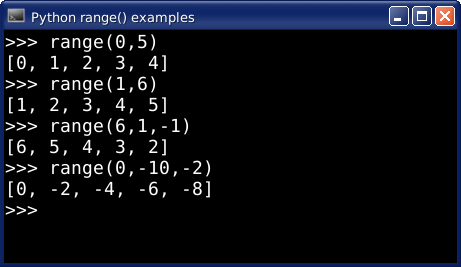python range
Python hosting: Host, run, and code Python in the cloud!
The range() function in Python is a versatile and commonly used function. It is designed to generate a sequence of numbers based on specified parameters.
Syntax:
range(start, stop, step) |
Parameters:
- start: It denotes the starting value of the sequence. It’s optional, and the default value is 0.
- stop: Specifies the upper limit. The sequence does not include this number.
- step: The interval between numbers in the sequence. It’s optional with a default value of 1.
All these parameters should be integers and can also be negative.

Related Course: Enhance your Python skills with this Python Programming Bootcamp: Go from zero to hero.
Differences in range() Implementation Across Python Versions:
- Python 2.x: In this version, the
range()function directly returns a list. - Python 3.x: Here, the
range()function creates an iterable sequence, not a list.
Using range() in Python 2.7:
When range(5) is called, it returns: 0,1,2,3,4.
range(5) |
A call to range(1,10) gives: 1,2,3,4,5,6,7,8,9.
range(1,10) |
For range(0,10,2), the result is: 0,2,4,6,8.
range(0,10,2) |
Using range() in Python 3:
In Python 3, you can convert the range sequence to a list using the list() function.
list(range(5)) |
Using all parameters (start, stop, step):
list(range(0,10,2)) |
Memory Considerations for Python 2 Implementation:
In Python 2, the range() function allocates memory for the entire list, which might not be memory-efficient for very large sequences. If you’re working with extremely large number ranges (e.g., in the millions), this can be a concern. However, for most applications, it should work seamlessly.
Dive deeper into Python with these Downloadable Python Exercises.

Leave a Reply: